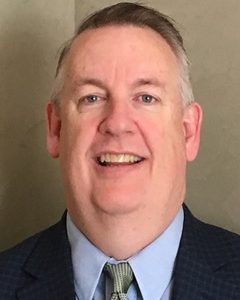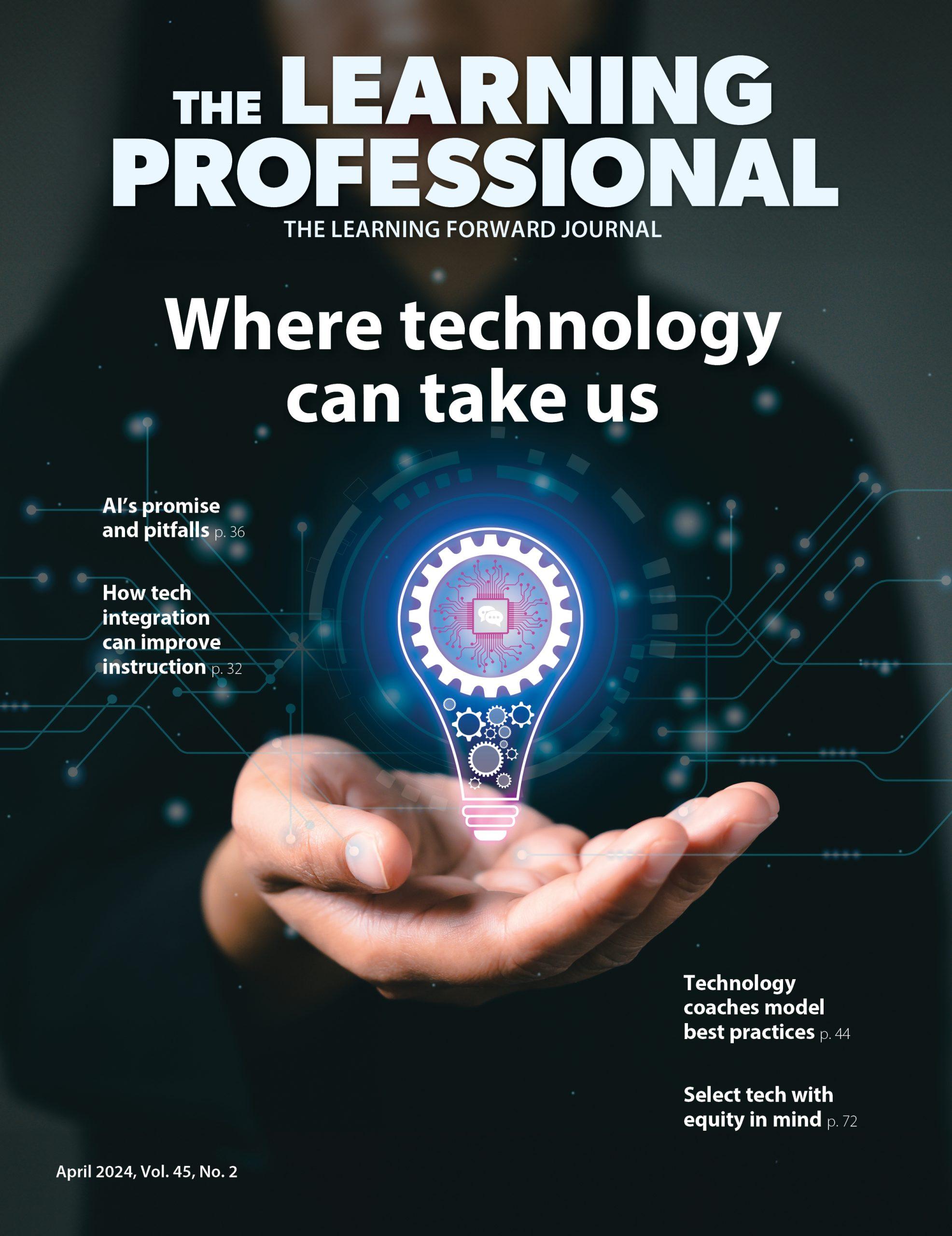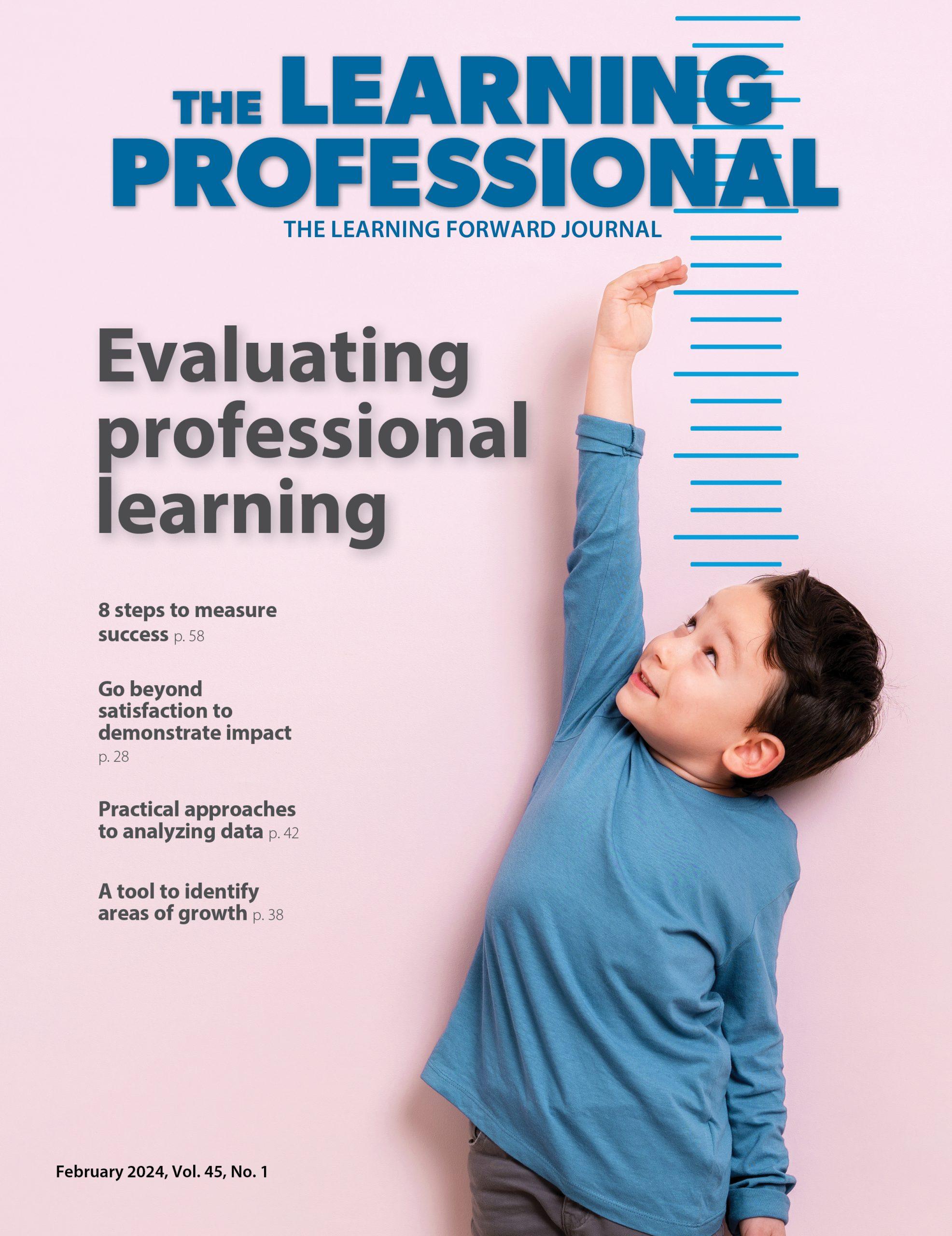Common Goal Unites District
Leaders and teachers build literacy and a collective responsibility for student learning.
By James A. Bailey
April 2016
It was the morning of the last social studies content-area literacy studio of the year. Five middle and high school social studies teacher leaders, the high school principal, the superintendent for instruction, and a coach from the University of Washington Center for Educational Leadership gathered around a table in the middle school library in Evanston, Wyoming.
It was late March. The snow had started to thaw, and teachers in Uinta County School District #1 were already talking about spring break. After Doug Rigby, the high school principal and social studies lead, welcomed the teachers to the professional development session, the host teacher, Tim Herold, started passing out copies of a one-page text about early Puritan life in the New England colonies.
“I read this article last night and thought about why I want the students to read it,” Herold said. “I have some thoughts about why they may struggle with it, and I drafted some questions that I think will help them stay focused on the meaning. But I really want to know all of your thoughts first.”
The content coach nodded and reminded the group that they would have two hours to plan this lesson collaboratively before teaching it, as a team, at 10 a.m., to Herold’s 8th graders.
As had become the norm, the teachers and district leaders prepared to read through the text and take notes to track key ideas, show their own thinking, and indicate where they expected students might struggle. But, before they began, Rigby said, “Thanks, Tim. Tell us, what is your purpose for having students read this text today?”
Herold pulled out some notes. “I want the students to determine the central ideas in this text so that they can explain how religion shaped the lives of the early New England settlers.”
The teachers made note of this and started reading the article, referring to their handout from Achieve the Core (https://achievethecore.org, an online resource for Common Core State Standards materials) describing the process for creating “text-dependent questions.” Rigby added that he saw how this particular purpose lined up with one of the Common Core State Standards for reading history that the group had been discussing all year.
The superintendent for instruction, James Bailey, said he appreciated how Herold had tied the lesson to a standard that was critical to students’ understanding as they read in the content areas. “And that’s a standard that we continuously assess as a system,” Bailey added. “In fact, you will be reviewing summative student learning data on this type of reading in another month. This lesson should give us information about how we are doing in progressing toward that standard.”
After about 15 minutes of reading, teachers began talking to each other about the text, navigating between the content and the way the text was written. Nate Conrad, a high school teacher, said, “I think it’s really describing how the Puritans found justification in their religion for trying to set up the perfect society.”
Gwen Stieglemeyer, a middle school teacher, added, “I also see here the author talking about people who got kicked out of the Massachusetts Bay Colony, but he is just mentioning it, not making a big deal out of it. … I think the students would get really interested in that.”
The content coach spoke up once or twice to remind the teachers to stay rooted in the text and the goals that Herold had set for his students. She also nudged them to think about how they determined the central ideas themselves as a way to guide their lesson planning.
After about half an hour, teachers reached consensus about the central ideas in the text and Herold recorded them on a large flip chart. The content coach reiterated the key ideas and asked teachers to discuss what made the text challenging, using the Common Core State Standards’ model of text complexity.
Teachers agreed, after discussing the vocabulary and knowledge demands of the text, that the biggest challenge would be the structure. As Stieglemeyer summed up, “It jumps around a lot, and the students may not know what to do with that. It’s not chronological.”
Herold agreed that the structure would be most challenging for his 8th graders and said, “This lesson belongs to all of us, not just me. I am curious to hear how you would all divide up the text, where you would ask the students questions, and what those questions would be. I’ll wait to hear your questions before I share mine.”
The team discussed places in the text where they would ask students to pause and answer a specific text-dependent question, a question with answers rooted in the text. Teachers had previously agreed this was the most challenging part of the process, writing questions that would force students to reread the challenging parts and attend to the overall purpose.
As a team, the group brainstormed questions for students to consider during and after the reading, refined the wording of those questions, reviewed them again, and then checked the questions against Herold’s overall purpose for reading the text. Herold said that some of the questions the group had brainstormed were similar to his, but the group had pushed him to think about the text in a different way.
Rigby pressed them to identify how they would know students had been successful. “What will it sound like if students answer these questions correctly? What will we look for in student writing and discussion? How will we know if they are navigating the confusing structure and making meaning?”
Then, at 9:30, with half an hour to spare, the group decided who would teach what part of the lesson. Herold would frame the purpose and guide students through the first read of the text. Stieglemeyer would guide students through the first set of text-dependent questions. The other teachers would take turns with the rest of the questions, and Rigby would ask students the last question to catapult them into a final written prompt about what they had read.
Throughout the teaching process, teachers would circulate the classroom and take notes as they listened to students talk to their partners and as they recorded their thinking on the text.
By 10 a.m., the five social studies teachers, Rigby, and Bailey had lined up at the door to Herold’s classroom, copies of the newly created lesson in hand, ready to go.
After teaching the lesson, the group knew they would be analyzing student work and considering implications for future lessons as well as for supporting students with social studies texts in general. Then the group of teacher leaders would decide what to teach their peers during the next districtwide social studies teacher professional development. They would be pulling key learning from this studio and deciding how to engage their peers with that information.
Looking Back
Educators across the nation have been responding to the push for content-area literacy instruction in their systems. While the press for higher academic standards has sharpened national focus on the reading of complex, discipline-specific informational texts, educators have been grappling with how to help science, social studies, and vocational education teachers support student literacy for decades (Shanahan & Shanahan, 2008; Shanahan & Shanahan, 2012).
Traditionally, content-area focused teachers, particularly at the secondary level, have not been trained to teach students how to access rigorous texts, including which disciplinary-specific strategies to use, how to break down and think about disciplinary text, or how to grapple with difficult questions while reading closely.
Content-area teachers at the secondary level may not know how they, as readers, perform these tasks when they read in their discipline, and then they may struggle to teach their students to implement these skills while integrating texts into the big ideas in their curricula. District leaders, principals, and teacher leaders across the country continue to ask how to create collaborative, content-specific, inquiry-based professional learning for content-area teachers to learn to understand what it takes to read texts in their discipline and how to teach students to do so.
After three years of focus on content literacy, Bailey, the superintendent for instruction, said that the content literacy studio work in Evanston had become “almost self-sustaining.” Teachers and district leaders at the March social studies studio had enough content knowledge to almost independently determine a purpose for reading a text, analyze complex content-area articles, and design a sequence of text-dependent questions to guide students towards that purpose.
During the three years, social studies teachers, as well as their other content-area colleagues, developed what Lee and Smith (1996) might call “collective responsibility for student learning,” or a shared ownership of how students performed in their classes and their collective role in designing that learning through lesson and formative assessment planning. Teachers came to the sessions with the expectation that they would work together, struggle, teach a co-designed lesson, and step back to analyze it based on student data.
The level of collegiality, openness, and content knowledge among social studies teachers didn’t happen by chance. The interactions among these teachers and with the text during this March studio was the result of seven years of systemwide learning about literacy and the Common Core State Standards — three focused years for this particular group of secondary content-area teachers — about what makes texts challenging, how students make sense of texts, and how to collaborate as a team.
This amount of literacy-focused professional development for secondary level content-area teachers represented a sharp departure from typical professional learning for teachers in Uinta. Even though their English teacher colleagues had been experiencing professional development of this type for years, during the first few studio experiences, some social studies teachers sat with their arms crossed.
In the fall of the first year, one teacher said, “We have too much content to teach. There’s not time to have students read like this.” Others said that, as social studies teachers, they did not know how to teach students to read texts, and that furthermore they had no idea how to examine their own reading processes.
Perhaps most strikingly, during the first studio sessions, teachers would come to the table with their lessons already planned, unwilling to change them. What explains this change in Uinta teachers? What has been the result for the students in Uinta?
Key Lessons
When reflecting on the process of building the community of secondary content-area educators in Uinta, several lessons emerge. These lessons involve the role of leadership, content-embedded professional development, teacher leadership, and a focus on student achievement.
Uinta made the commitment to literacy learning throughout the system by involving district and school leaders from the start. Principals and district leaders participated in every professional development session, learning alongside teachers, even jumping in and teaching part of the lessons. Between studios, the principals observed teachers trying out literacy instruction in their classrooms.
Over time, the principals took more and more responsibility for making opening and closing comments at the professional development sessions, communicating the importance of the learning and how it fit with school and district goals. District leaders also worked with principals between sessions in analyzing classroom instruction for patterns and developing specific feedback protocols.
Uinta built capacity through content-area focused, job-embedded professional development. Teacher leaders in each subject area worked collaboratively with a Center for Educational Leadership content coach four times a year for three years to learn about adolescent literacy, text complexity, their own reading processes, and how to teach literacy processes through minilessons and close reading. This learning took place in daylong content workshops.
Additionally, teacher leaders collaboratively designed and co-taught literacy lessons “live” in classrooms in front of each other and then debriefed what they saw using student work. These lessons featured texts that teachers were already teaching in their curriculum and focused squarely on the students in these classrooms.
During the first year, the content coach modeled some of the teaching. Over time, teachers took on more of the teaching themselves. Meeting in content-area departments to engage in learning became critical over the three years as teachers learned more and more about what made reading in different content areas different.
The system spread the learning by leveraging teacher leadership and keeping a focus on data. Teacher leaders designed and facilitated professional development for their colleagues based on what they learned in their professional development sessions. All teachers set inquiry-based goals for student learning in literacy and brought student learning data to each session with their content-area colleagues.
In Uinta, reading in content-area classrooms looks very different from how it looked five years ago. Principal observations suggest that students are no longer just assigned tasks and told to figure them out. Instead, teachers in social studies, the arts, science, and vocational areas now model for students how to tackle complex texts, figure out challenging vocabulary, and navigate various structures that often inhibit understanding.
Principals also discuss how teachers’ professional conversations have changed and how teachers are now focusing on student work samples to make frequent and ongoing adjustments. From the district leader level, principals are now more able to identify specific and exact next steps in feedback to teachers and can articulate the amount of reading work done in content classes.
Student results also show how a studio model of professional development has impacted student’s skill level. At the high school level, the ACT suite of tests has shown a yearly increase in average score and the number of students meeting the college readiness benchmark. From 2010 to 2015, 12th-grade scores increased from 19 to 20.2, 11th-grade scores from 19 to 19.9, 10th-grade scores from 17 to 17.6, and 9th-grade scores from 16 to 16.6 (see above). Transforming a school system’s professional learning capacity for literacy does not happen over the short term. As Uinta’s experience shows, a long-term, comprehensive approach provides the necessary key to propelling educators past initial resistance and toward a self-sustaining community focused on student achievement.
References
Lee, V. & Smith, J. (1996). Collective responsibility for student learning and its effects on gains in achievement for early secondary school students. American Journal of Education, 104(2), 103-147.
Shanahan, T. & Shanahan, C. (2008). Teaching disciplinary literacy to adolescents. Harvard Educational Review, 78(1), 40-59.
Shanahan, T. & Shanahan, C. (2012). What is disciplinary literacy and why does it matter? Topics in Language Disorders, 32(1), 7-18.

James A. Bailey (james@sel-leaderu.com) and Randy Weiner (randy@sel-leaderu.com) are partners at SEL-LeaderU.
Recent Issues
LEARNING TO PIVOT
August 2024
Sometimes new information and situations call for major change. This issue...
GLOBAL PERSPECTIVES
June 2024
What does professional learning look like around the world? This issue...
WHERE TECHNOLOGY CAN TAKE US
April 2024
Technology is both a topic and a tool for professional learning. This...
EVALUATING PROFESSIONAL LEARNING
February 2024
How do you know your professional learning is working? This issue digs...







